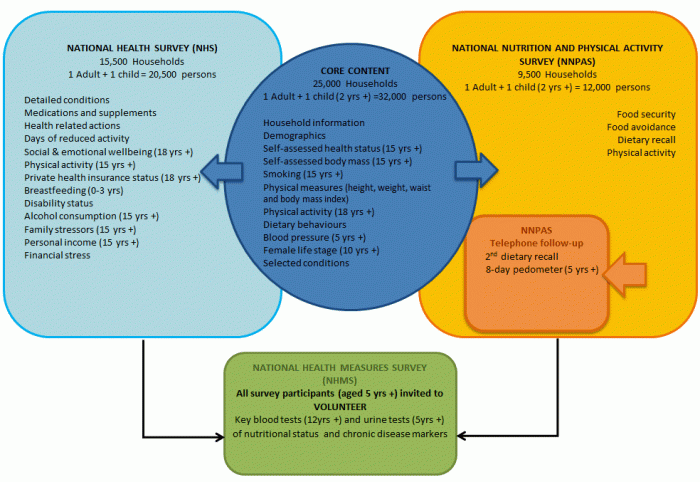Physical activity has been identified as an important contributor to maintaining good overall health. The amount of time spent on physical activity has long been a focus for research and policy makers. Low levels of activity are identified as a risk factor for a range of health conditions, including cardiovascular disease, diabetes and osteoporosis, as well as being a strong contributor to levels of obesity.
In recent times, the dangers of high levels of sedentary behaviour to overall health have also been recognised in relation to chronic disease and obesity.
Children and young people
- In 2011-12, toddlers and pre-schoolers (aged 2–4 years) spent an average of around 6 hours per day engaged in physical activity. They also spent almost one and a half hours (83 minutes) in the sedentary activities of watching TV, DVDs or playing electronic games.
- On average, children and young people aged 5–17 years spent one and a half hours (91 minutes) per day on physical activity and over two hours a day (136 minutes) in screen-based activity with physical activity decreasing and screen-based activity increasing as age increased.
- Just under half (44%) of all children and young people (2–17 years) had at least one type of screen-based item (e.g. TV, computer, or game console) in their bedroom. For the 15–17 year olds, three-quarters had some kind of screen-based media in their bedroom and this was associated with them spending an extra two hours per week watching/playing screen-based media compared with those who did not have any such item in their bedroom.
- The children and young people who participated in the pedometer study, recorded an average of 9,140 steps per day. Children aged 5–8 and 9–11 years were most likely to reach 12,000 steps per day (22% and 24% respectively), while 15–17 year olds were least likely to (7%).
Adults
- In 2011-12, adults spent an average of just over 30 minutes per day doing physical activity. However, against the National Physical Activity Guidelines for adults "to do at least 30 minutes of moderate intensity physical activity on most days", only 43% of adults actually met the "sufficiently active" threshold.
- The highest levels of physical activity were among the young adults with 53% of 18–24 year olds being classed as sufficiently active. Levels of physical activity tended to decline in older ages, with the lowest being among people aged 75 years and over, where the average time spent in physical activity was 20 minutes per day, and just one in four this age were classified as sufficiently active against the guidelines.
- Levels of sufficient physical activity were associated with a range of factors:
- Relative socioeconomic disadvantage: Adults in the least disadvantaged quintile were 1.5 times more likely to have done sufficient physical activity compared with those in the most disadvantaged quintile.
- Health status: Adults who described their health as "excellent" were over twice as likely to have done sufficient physical activity compared with people with "poor" self-assessed health.
- Body mass index (BMI): The underweight/normal weight population were 1.4 times more likely to have done sufficient physical activity compared with the obese population.
- Smoking status: ex–smokers and people who never smoked were 1.2 times more likely to have done sufficient physical activity compared with current smokers.
- Sedentary activity occupied an average 39 hours per week for adults, with close to 10 hours of this sitting at work. People employed in more sedentary occupations such as clerical and administrative workers spent on average 22 hours a week sitting for work.
- Watching TV was the most prevalent sedentary activity, at nearly 13 hours a week, peaking at over 19 hours per week on average for people aged 75 and over. Using the computer or Internet (for non-work purposes) peaked at almost 9 hours per week for 18–24 year olds.
- The adults who participated in the pedometer study, recorded an average of 7,400 steps per day. Less than one in five adults (19%) recorded 10,000 steps per day on average.
For definitions used in this publication, see Glossary.
